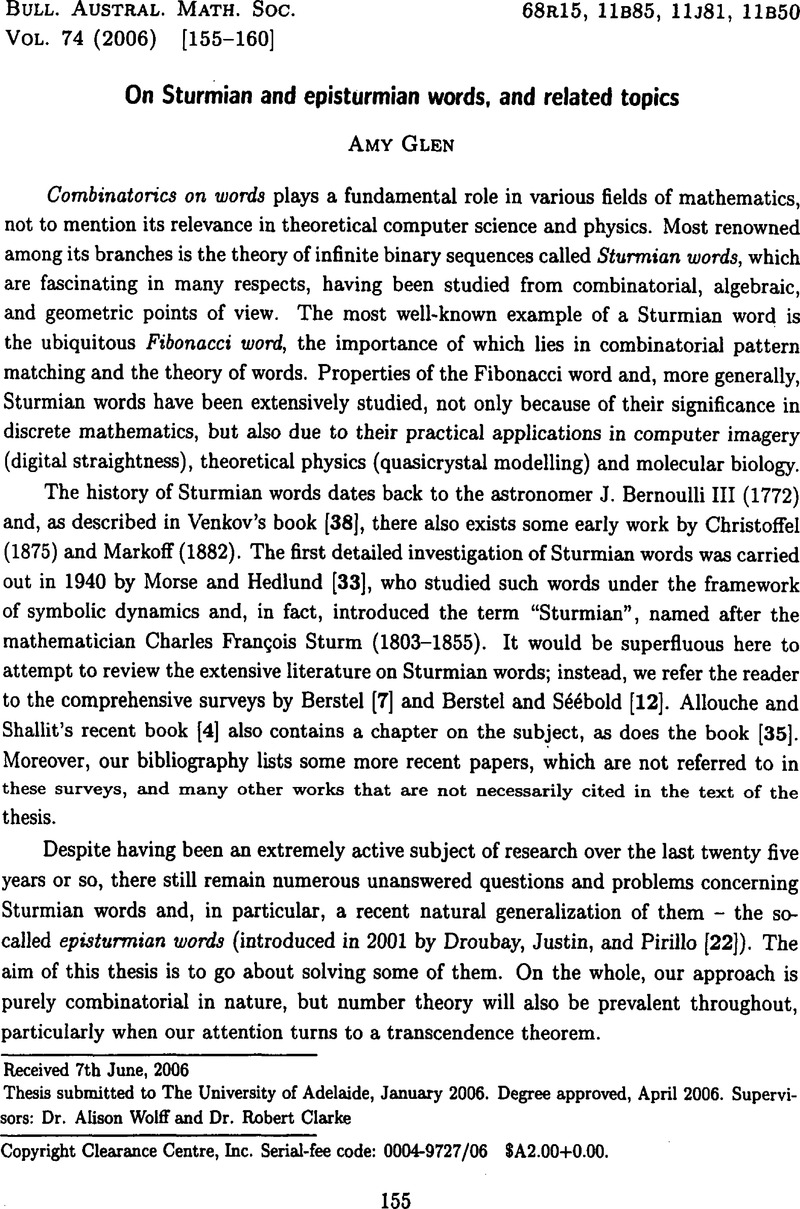Crossref Citations
This article has been cited by the following publications. This list is generated based on data provided by Crossref.
Glen, Amy
2007.
Powers in a class of A-strict standard episturmian words.
Theoretical Computer Science,
Vol. 380,
Issue. 3,
p.
330.
Bucci, Michelangelo
de Luca, Aldo
De Luca, Alessandro
and
Zamboni, Luca Q.
2009.
On θ-episturmian words.
European Journal of Combinatorics,
Vol. 30,
Issue. 2,
p.
473.
Glen, Amy
and
Justin, Jacques
2009.
Episturmian words: a survey.
RAIRO - Theoretical Informatics and Applications,
Vol. 43,
Issue. 3,
p.
403.
Glen, Amy
Levé, Florence
and
Richomme, Gwénaël
2009.
Directive words of episturmian words: equivalences and normalization.
RAIRO - Theoretical Informatics and Applications,
Vol. 43,
Issue. 2,
p.
299.
Mousavi, Hamoon
and
Shallit, Jeffrey
2015.
Combinatorics on Words.
Vol. 9304,
Issue. ,
p.
170.
Huang, Yuke
and
Wen, Zhiying
2017.
The numbers of repeated palindromes in the Fibonacci and Tribonacci words.
Discrete Applied Mathematics,
Vol. 230,
Issue. ,
p.
78.
Ghareghani, N.
and
Sharifani, P.
2021.
On square factors and critical factors of k-bonacci words on infinite alphabet.
Theoretical Computer Science,
Vol. 865,
Issue. ,
p.
34.



